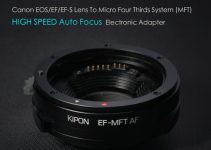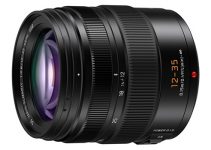Picking the right lens and optimal focal length, in particular, may drastically vary from occasion to occasion. The lens choice can not only affect the visual relationship between your subject and background but also can utterly change the mood and aesthetics of your overall shot.
So, how do you opt for the right lens? The answer, of course, is never that simple and straightforward but the following video of WP Media Concepts should give you some clues on the topic by showcasing how much an image is impacted between different focal lengths along with the level of distortion that can occur in various situations.
As we can see in this particular example, the differences between the shots can be easily spotted simply by changing the camera position relative to the subject while trying to maintain the same framing with different lenses. Apparently, the lower focal lengths are not appropriate for interview setups and close up shots because not only they do create unpleasant distortion and change the proportions of your interviewee’s face, but to keep a proper medium close-up, you will have to place your camera extremely close to your subject.
With focal lengths in the 35mm to 50mm range, however, the distortion starts to decrease gradually while the field of view of the background still remains present. It also becomes much easier to isolate your subject from the background thus creating a more appealing look while keeping your background slightly out of focus. The 50mm lens, for instance, not only offers an undistorted perspective that’s also closest to the field of view of the human eye on a full-frame sensor but also provides an appealing cinematic look that is highly demanded by both professional videographers and enthusiasts alike.
You can use an 85mm lens and beyond to isolate your subject even further while creating a crisp separation from the background. It’s also important to remember that the higher you go in focal length, the more compressed the background becomes.
You will also need to move your camera far away from the subject to maintain your composition. Even though you can turn this requirement to your advantage by making your subject feel more comfortable and relaxed in front of the camera, you may be limited by the physical space you will need to work with on some occasions.
As a rule, longer focal lengths can be more dramatic and can create better separation between foreground and background while medium range can provide more context to the image by opening up the location. For an interview setup like the one showcased in the video above, shooting between 50 and 100mm will apparently give you the optimal results. If time restraints are an essential consideration for your workflow, you can opt for a zoom lens instead of a set of primes as the former will give you additional focal lengths while eliminating the necessity to swap lenses all the time.
[source: WP Media Concepts]
Disclaimer: As an Amazon Associate partner and participant in B&H and Adorama Affiliate programmes, we earn a small comission from each purchase made through the affiliate links listed above at no additional cost to you.




